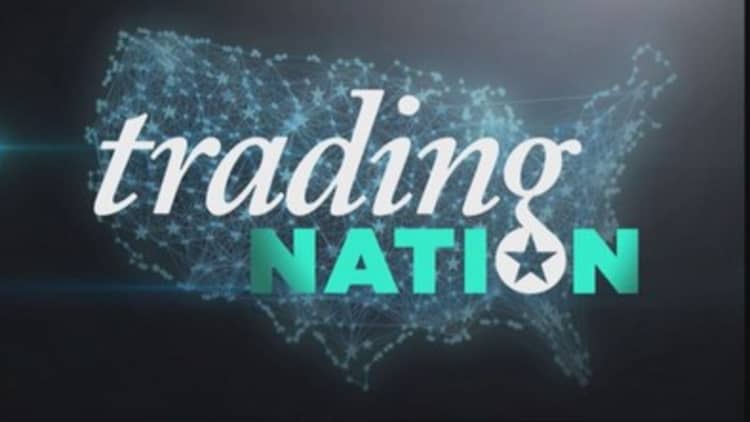
Most investors have never heard of the three-month volatility index, which is known as the VXV. But the relationship between the CBOE three-month volatility index and the options exchange's more familiar 30-day volatility index, the VIX, may signal trouble for stocks.
Like the VIX, the VXV is a measure of expected volatility in the that is computed from the prices of options on the index. However, while the VIX measures expected volatility over the next 30 days, the VXV measures expected volatility over the next 93 days.
By comparing the two, an important indicator is formed, according to Bank of America Merrill Lynch technician MacNeil Curry.
In a recent note, Curry wrote that Thursday's and Friday's closes "above 1.2 in the VXV/VIX ratio is a significant concern. Historically, the market has struggled to hold its gains when this ratio closes above 1.2," furnishing the following chart to make his point.
Conversely, Curry says that a VXV/VIX ratio below 1 is a buy sign for the S&P 500.
On Tuesday, the VXV closed at 15.85 while the VIX closed at 13.67, meaning the ratio is now at 1.16, which is firmly in the unfavorable zone.
Curry, who remains bullish on the S&P despite his concern, did not create the ratio. In fact, it is periodically used among options traders as a helpful means of forecasting where the VIX itself is going.
The rationale behind this use of the VXV makes intuitive sense. Since it captures implied volatility over a three-month period, the VXV quite literally tells traders where the VIX is expected to go. In fact, this was one of the rationales behind the creation of the index in 2007.
However, not everyone buys the VXV/VIX relationship as a useful predictor of stock prices.
"Look, it's a nice short-term trading tool," said David Seaburg, head of equity sales trading at Cowen. "Can you look at it and say, 'Is there a possibility that volatility over the next several months is going to pick up and this ratio is showing?' Absolutely. So with more volatility comes more downside risk. But I would say to you that I wouldn't put too much credence into it."
"You can tell on the chart that every reading has been followed by a very slight pullback, if any, and then higher highs in the market," Seaburg said. "So stay focused, be invested, and don't pay too much attention to this kind of [stuff]."
Still, history does tell us that the VXV/VIX ratio can throw off some powerful signals.
The highest the VXV/VIX indicator has ever risen is 1.41, which was achieved in March 2012 as the VIX plummeted to multiyear lows. Two months later to the day, the VIX was 54 percent higher, and the S&P 500 was 5.7 percent lower.
Conversely, the lowest level ever achieved by the VXV/VIX ratio is 0.7, on Oct. 24, 2008, the day the VIX spiked to 90. (No surprise, then that the three-month expectation was for a bit less volatility.) Two months later, the VIX closed 44 percent lower than it closed on that day.
Still, the market was 1 percent lower over the time frame—perhaps making the point that the VXV is a better predictor of the VIX than of the S&P 500 itself.
CORRECTION: This version corrected Tuesday's closing price for the VIX.
Want to be part of the Trading Nation? If you'd like to call into our live Monday show, email your name, number, and question to TradingNation@cnbc.com.






